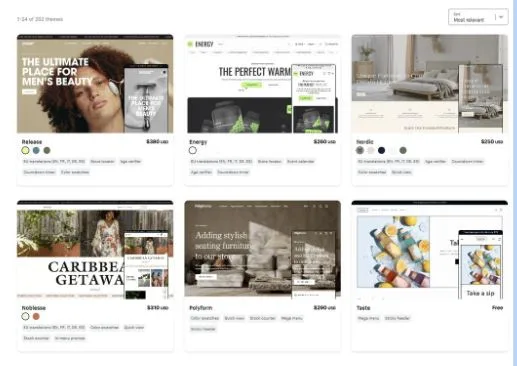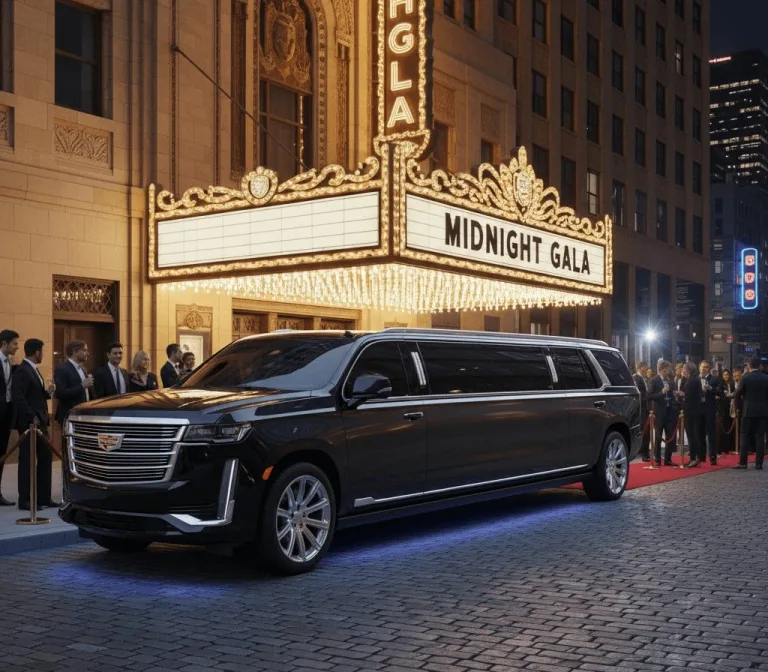Forget Fancy Fonts—Charlotte Website Design Is Winning with Brutal Simplicity
You’ve probably seen them — websites that look like art exhibits. Giant images floating around, fonts that look like they were picked by an intern with a flair for drama, and buttons hidden behind micro-animations that only a UX shaman could decipher. Welcome to design theater — where flash trumps function and nobody clicks “Buy.”
Now let’s zoom in on Charlotte, North Carolina — where businesses are saying no to this nonsense. Website design in Charlotte has taken a sharp turn from the glittery chaos of Silicon Valley, adopting a new philosophy: brutal simplicity. It’s not dull. It’s brilliant. And unlike those design-diva sites, it works.
The Simplicity Renaissance in the Queen City
Charlotte might be booming in tech, banking, and craft beer, but when it comes to web design, it’s all about subtraction. Less clutter, more conversions. Designers here have realized that people don’t visit websites to admire the kerning — they’re trying to book appointments, order food, buy local, or finally figure out what your business even does.
That’s why website design in Charlotte now revolves around clarity. You won’t find five competing calls-to-action on the same screen. Instead, you’ll find space, speed, and a layout that feels like it wants to help you, not impress you. And in a city where startups are born in coffee shops and old-school companies are finally embracing the web, that clarity is pure gold.
Brutalism Rebranded — But Friendly This Time
Let’s get one thing straight: “brutal simplicity” doesn’t mean ugly. We’re not talking concrete-gray backgrounds and pixelated icons from 2004. We’re talking minimalism with manners. Designers here aren’t afraid to use white space like a luxury item, stripping down interfaces until only the essentials remain — what users need, and what makes them convert.
Many agencies offering website design in Charlotte have adopted what we jokingly call “Southern Brutalism” — it’s direct, functional, and clean, but still polite. Buttons are obvious. Navigation is logical. There’s still color and charm, but it doesn’t scream “look at me” while hiding the checkout button.
In short? The goal is to guide, not impress.
Performance Isn’t a Feature — It’s the Baseline
There’s another reason simplicity wins — it’s fast. And when you design smart from the beginning, you don’t have to duct-tape optimizations after the fact. In Charlotte, websites aren’t just visually appealing; they’re dynamic. And Google notices. Your customers do too.
Here’s what makes that possible — and what more and more developers in Charlotte are treating as non-negotiable in every project:
- Lean codebases: No bloatware, no ten-libraries-for-one-button nonsense.
- Smaller image footprints: Optimized media means you can still look great without dragging load time.
- Mobile-first frameworks: Built for thumbs, not 4K monitors in designer offices.
- Simplified CSS: Design systems that scale without loading a new stylesheet for every mood.
- Minimal third-party scripts: Analytics? Yes. Ten popups from random apps? No.
- Strategic use of caching and CDNs: Faster delivery, especially for Charlotte-based audiences.
- Clean HTML structure: Accessibility and SEO don’t fight when you code like a grown-up.
By integrating these principles into every project, website design in Charlotte now starts with speed, not as a bonus but as a basic courtesy.
When Form Doesn’t Follow Function
Let’s talk failures — because Charlotte has seen its share. Businesses come in saying, “We just had a site done last year,” and yet their bounce rate is climbing, their mobile users dislike them, and every lead goes cold halfway through the form.
The problem? They followed a design trend instead of solving a business problem. It’s the web equivalent of wearing heels to hike a mountain.
That’s why the new generation of website design in Charlotte is built on user flow, not design trends. There’s strategy baked into every click path, and yes — sometimes that means sacrificing a “cool” idea for a boring one that just works. The result? Fewer dead ends, more engaged users, and sites that convert like they’ve been reading your customers’ minds.
Charlotte’s Secret? Local Designers Who Listen
The final piece of the puzzle isn’t a tool or a framework — it’s a conversation. The difference between a cookie-cutter WordPress theme and a real website often comes down to the first meeting. Designers in Charlotte aren’t chasing awards. They’re asking: What do your users need? What annoys them? What do you wish they’d do?
That’s why working with a Charlotte-based agency feels different. Website design in Charlotte has a local heartbeat. Whether you’re selling HVAC parts, hand-roasted coffee, or organizing a legal firm’s digital presence, designers here tend to listen first, sketch second.
And when they do sketch? You’ll likely get a layout that’s so simple it feels… suspicious until it starts converting.
Web Design by Function, Not by Committee
Suppose you’ve ever sat through a website planning meeting where twelve people all had different ideas about font weight and button color. In that case, you’ll understand the true cost of design by committee: confusion. The more cooks in the kitchen, the more bland the soup becomes — especially when the chef is replaced by a slide deck.
That’s why website design in Charlotte has increasingly leaned into tight collaboration between stakeholders and a dedicated design lead. Instead of juggling half a dozen approvals for every scroll animation, successful Charlotte web projects are driven by one or two core decision-makers who know what the business needs — not just what looks cool in a pitch deck.
The result? Sites that are easier to launch, easier to navigate, and easier to maintain. In Charlotte, design isn’t just about what’s trendy; it’s about what’s practical, focused, and grounded in business logic.
The Charlotte Approach vs. Everywhere Else
Let’s get honest. Not all web design philosophies are created equal. Some are rooted in agency traditions of inflated estimates, over-polished portfolios, and endless “revisions” that leave your site looking like a Frankenstein of client ideas and design ego.
Charlotte’s model, however, breaks that mold by emphasizing simplicity, speed, and innovative structure from the outset.
Here’s how the Charlotte web design model stacks up:
| Feature / Philosophy | Charlotte Web Design Approach | Traditional Agency Approach |
| Design Priority | Function-first simplicity | Visual “wow” moments |
| User Experience | Straightforward and intuitive | Often overdesigned or cluttered |
| Decision-Making | Lean, client-focused | Design-by-committee |
| Development Speed | Fast build cycles | Bloated timelines |
| Content Structure | SEO and conversion are aligned | Treated as an afterthought |
| Client Involvement | Collaborative, but efficient | Frequent, often chaotic input |
| Site Performance | Lightweight, fast-loading | Heavy, plugin-reliant |
This is why website design in Charlotte often delivers more results with less noise. It’s about stripping out the extras and building exactly what your audience needs.
When Clean Design Becomes a Business Strategy
In a world of endless pop-ups, video backgrounds, cookie banners, chatbots, newsletter modals, and spinning call-to-action buttons — clarity is revolutionary. Charlotte web designers aren’t just decluttering for the sake of beauty. They’re doing it because it works. Clean interfaces reduce decision fatigue. Logical flow boosts engagement. Fewer distractions mean more time focused on what matters — your value.
It’s not uncommon to see businesses that invested in website design in Charlotte report higher conversion rates with fewer features. One local business even removed an entire homepage section—and saw user retention increase. Simplicity isn’t just aesthetic; it’s a performance enhancer.
And as digital attention spans shrink to TikTok-length expectations, the race is no longer toward complexity. It’s toward clarity. That’s where Charlotte designers quietly shine.
Designing for Humans, Not Hypotheticals
There’s a common pitfall that many large agencies fall into: designing for personas that don’t exist. “Our primary user is a tech-savvy millennial homeowner who drinks oat milk, shops local, and prefers pastel blue.” Cute. But where’s the data?
The Charlotte approach to web design is refreshingly grounded. Instead of chasing trendy audience theories, designers work with actual users — customer service reps, real clients, and internal staff. They audit what real visitors do and where they drop off. The design reflects real use cases, not wishful assumptions.
That’s the magic of website design in Charlotte: it’s not trying to impress a marketing conference crowd. It’s trying to help a real person get what they came for — and then come back for more.
Ready to Go Simple, Smart, and Charlotte Strong?
If your current site feels like it was designed in a boardroom PowerPoint session or you’re just tired of hearing the phrase “modern redesign” without seeing real results, it might be time to start fresh.
Brutal simplicity isn’t just a Charlotte trend. It’s a long-term strategy that works across industries, devices, and audiences. Whether you’re launching a new brand or breathing life into a tired interface, clarity will consistently outperform chaos.
So if you’re looking for a partner who knows how to cut through the noise and deliver digital experiences that deliver — visit abovebits.com and talk to a team that’s helped hundreds of Charlotte businesses look better by doing less.
Because fancy fonts don’t build conversions, intelligent design does.






